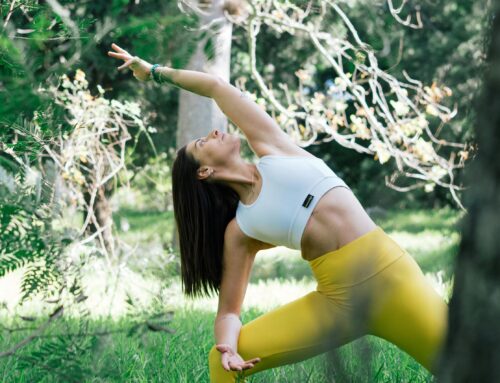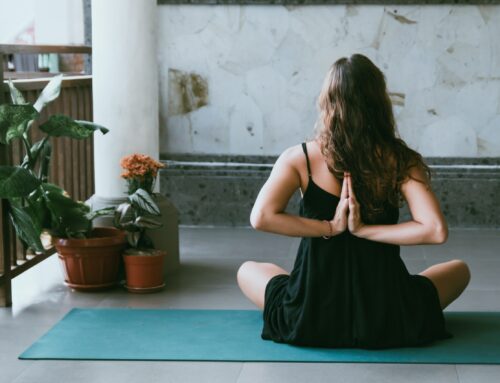Aging brings many changes, but staying active can make a world of difference in how we feel and move. Yoga for seniors is a gentle yet effective way to improve mobility, balance, and flexibility, helping older adults maintain independence and quality of life. Whether you’re new to yoga or looking for ways to adapt your practice, incorporating mindful movement can enhance strength and stability at any age.
Why Yoga is Ideal for Aging Bodies
Yoga is unique because it adapts to the individual rather than requiring the body to fit a rigid exercise routine. As we age, common concerns include reduced joint mobility, muscle stiffness, and a higher risk of falls. Research from [current year] shows that seniors who practice yoga regularly experience a 48% improvement in balance and a 36% reduction in fall risk.
Yoga addresses these issues by:
- Improving flexibility: Gentle stretches help keep muscles and joints supple.
- Enhancing balance: Poses that focus on stability reduce the risk of falls.
- Strengthening muscles: Holding postures builds strength without high-impact movement.
- Encouraging mindful movement: Breathwork and slow transitions prevent sudden movements that may lead to injuries.
Best Yoga Poses for Mobility and Balance
If you’re looking to maintain or regain mobility, incorporating these senior yoga poses into your routine can be beneficial:
Standing Poses
- Mountain Pose (Tadasana) – Promotes good posture and strengthens the legs.
- Chair Pose (Utkatasana, modified) – Builds lower body strength and improves stability.
- Tree Pose (Vrksasana, with support) – Encourages balance by focusing on one leg at a time.
Seated and Reclined Poses
- Seated Forward Bend (Paschimottanasana, modified) – Gently stretches the back and hamstrings.
- Cat-Cow Stretch – Increases spinal flexibility and improves posture.
- Legs Up the Wall (Viparita Karani) – Supports circulation and reduces swelling in the legs.
Expert Insights: How Yoga Helps Aging Bodies
A physical therapist specializing in aging, states: “Regular yoga practice helps older adults maintain independence by improving both strength and flexibility. Even 15 minutes a day can significantly enhance mobility.”
According to a study, seniors practicing yoga three times a week showed a 30% increase in lower body strength compared to non-practicing counterparts.
Addressing Common Questions About Yoga for Seniors
- Can seniors start yoga with no prior experience?
Absolutely! Many yoga classes are designed specifically for beginners, focusing on gentle movements and modifications.
- Is yoga safe for older adults with arthritis?
Yes. Gentle yoga for seniors can reduce joint pain and improve function. Look for classes that focus on slow, mindful movements.
- How often should seniors practice yoga?
Experts recommend 2-3 times a week, but even a few minutes daily can bring benefits.
- Can yoga help prevent falls?
Yes! Yoga strengthens stabilizing muscles and improves coordination, significantly lowering fall risk.
- What if I have mobility limitations?
Chair yoga for seniors is an excellent option for those with limited mobility, allowing safe and effective movement.
Adapting Yoga for Comfort and Safety
For those with limited mobility or joint pain, modifications, and props can make yoga more accessible. Consider these adaptations:
- Use a chair: Chair yoga is great for those who find standing poses challenging.
- Incorporate props: Blocks, straps, and bolsters support the body in certain poses.
- Go slow and steady: Moving gently prevents strain and allows time for the body to adjust.
- Listen to your body: Discomfort is a sign to ease up; yoga should never cause pain.
Steps to Build a Consistent Practice
Consistency is key to seeing the benefits of yoga. Here’s how to make it part of your routine:
- Start with 10-15 minutes a day and gradually increase your practice.
- Join a gentle yoga or senior yoga class for guided support.
- Focus on breathwork and relaxation to ease tension and improve focus.
- Stay patient with yourself—every bit of movement helps!
Aging doesn’t mean slowing down—it means adapting to new ways of staying active. Yoga for seniors provides a safe, effective, and enjoyable way to maintain mobility and balance while promoting overall well-being. No matter your age or ability, there’s always a way to move, stretch, and breathe toward a healthier, more independent life.









Leave A Comment